Crate Training Your Dog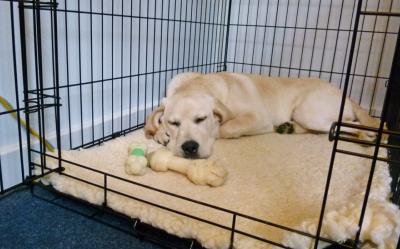 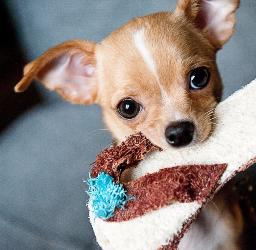 What Is The Purpose Of A Dog Crate? Puppies and adult dogs have a natural liking for enclosed sleeping places. In the wild, they will seek out a safe den to sleep and rest, where they are safe from the elements and predators. The resemblance to cages or prison puts many people off however, if the crate is correctly introduced to the dog, it becomes an extremely helpful training aid and a comforting area for if the dog is stressed. Especially for young puppies and dogs, it provides a safe space for owners to leave their pet at night, where they won't get up to mischief or chew things they shouldn't! 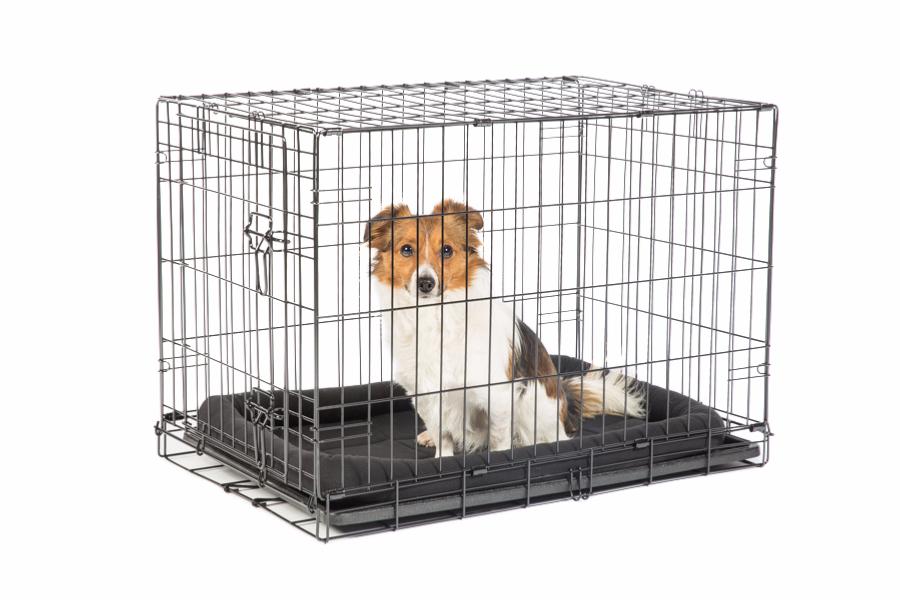 When Should I Introduce A Crate? Many good breeders will introduce their pups to a crate from an early age, so your pup may be settled in a crate from the day it comes home. However, a crate can be introduced at any age - from the day you take your pup home, to older dogs. What Size Of Crate Does My Dog Need? 18"Cat Small Breed Pup 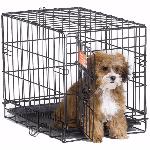 18" x 12" x 16" 24"Chihuahua Papillon 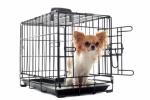 24" x 17" x 21" 30"Shih Tzu Pomeranian 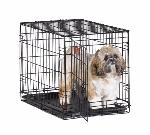 30" x 19" x 22" 36"English Bulldog Mini Schnauzer 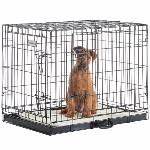 36" x 23" x 28" 42"Border Collie Labrador 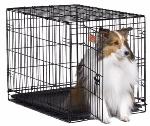 42" x 26" x 30" 48"Greyhound Rottweiler 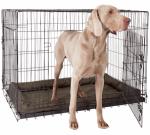 48" x 29" x 32" 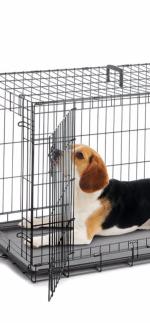 How do I crate train my dog? Step 1: Place the crate in a central part of the household, the dog should still feel like it is part of the family when in the crate. Feed the dog in the crate every day, with the door open, for about 5 days. All good things should happen in the crate, toys, treats, a cosy bed, etc. Step 2: The dog will start to use the crate without your encouragement, for example when you give a treat he may run to the crate to eat it. At this stage you can begin to close the door for 30 seconds at a time, while he is busy with a treat. Step 3: Gradually increase the amount of time the door is closed for, ensuring the dog always has something good to chew while the door is closed. If your dog is distressed when the door is closed, shorten the time and give a nicer treat for the next attempt. Step 4: Within a few days, the dog will see the crate as his safe haven, and will be content when the door is closed.  Should I Use Wee-Wee Pads In The Crate? If you want your dog to use Wee-Wee pads in their crate, the size of the crate should be at least double what you would usually use for that breed. Dogs do not like to toilet in their den. 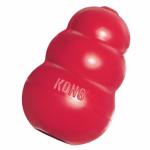 How Do I Make The Crate Feel Safe For My Pup? Placing a blanket over the crate, or using a fitted crate cover, will make the crate seem more like a den to your dog. Always ensure your dog has something to chew on when in the crate, we recommend safe, long lasting chews such as Stag Bars and stuffed Kong toys.  Will crate training help with toilet training? A crate can be very useful for a pup who is difficult to toilet train, as they can be taken to the toilet as soon as they’re taken out of the crate and will likely need to go.  What are the advantages of crate training? A dog’s crate is his safe place, a haven to get away from noisy kids, TV noise, etc. Confining a puppy to a crate helps him to socialise visually and aurally. It prevents chewing of wires and furniture, and toilet accidents when your puppy is still young. Crate Training Dos & Don'ts Take the time to crate train your dog correctly, be patient.  Take your dog out of the crate regularly to exercise and play  Cover the crate with a blanket to make your dog feel safer and more secure.  Introduce a crate to your dog as soon as you get him/her home.  Allow your dog access to the crate when he is stressed, whether by visitors, children or loud noises.  Don't expect your pup to enjoy being away from you, before they trust the crate.  Don't leave your dog in the crate for longer than he/she can wait to go to the toilet.  Never use the crate as punishment - it should only be a safe haven. |


